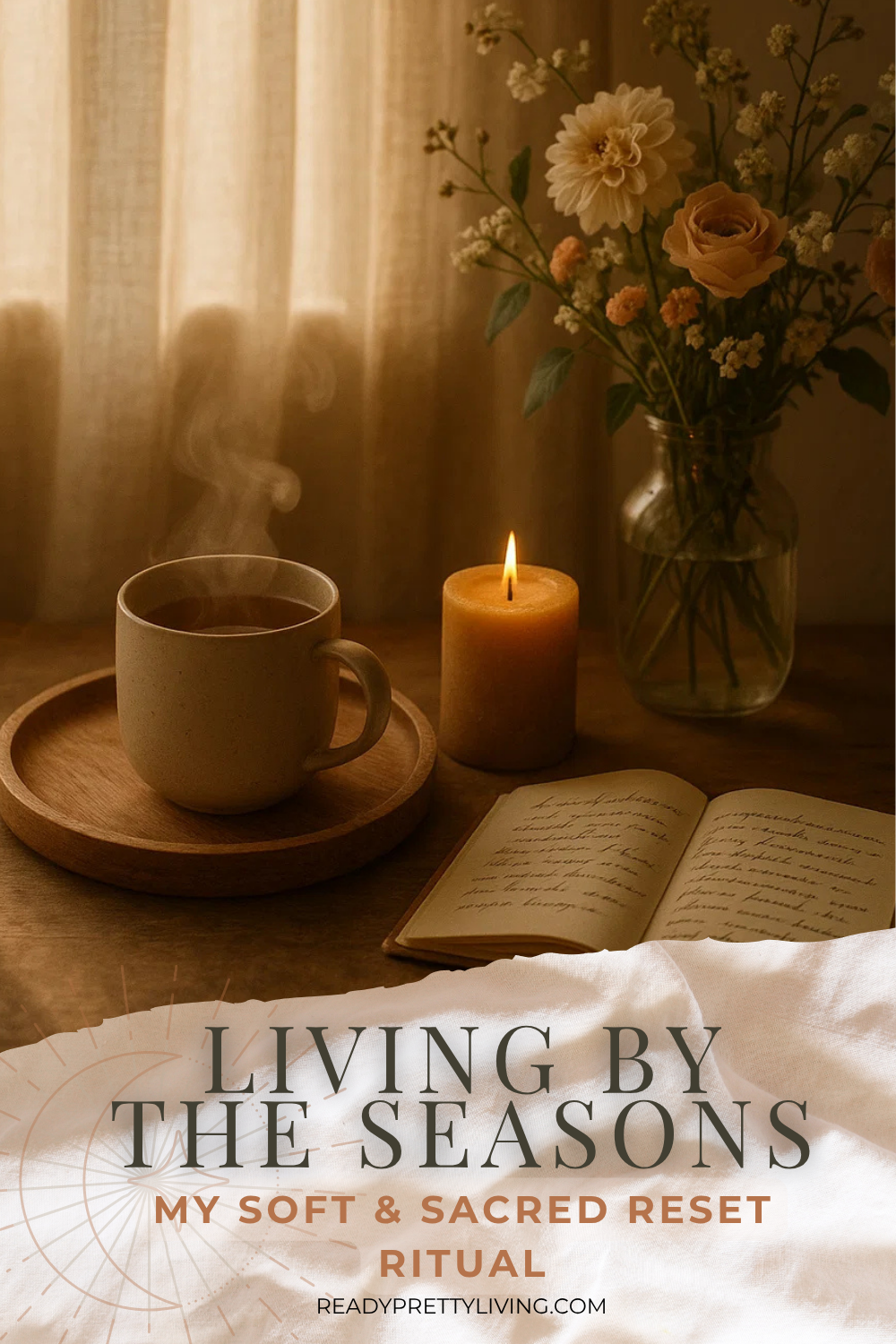Living by the Seasons: My Equinox Reset Ritual
How I mark the shifting light with rhythm, rest, and beautiful intention
Every equinox, my son comes home from school buzzing with excitement about their seasonal celebration—stories of balance experiments, nature crafts, and the magic of equal day and night. As I listen to his animated descriptions, something always shifts inside me too. Not the dramatic, mystical kind of shift you might read about in wellness magazines, but something quieter and more practical.
I start thinking about winter car kits. Summer clothing storage. Whether the water bottles in my trunk will survive another season of temperature extremes.
This is my equinox ritual: the gentle, week-long dance of preparing my home and family for what’s coming next.
What the Equinox Really Means to Me
The equinox isn’t just about balance between light and dark—though that’s beautiful too. For me, it’s about that moment when I realize we’re truly transitioning into a new season, with all its unique gifts and challenges.
Living in a cold climate, these transitions matter in practical ways. Summer’s abundance gives way to winter’s need for cozy preparation. Spring’s renewal calls for different rhythms than autumn’s gathering energy.
I’ve learned to honor these shifts not with grand gestures, but with small, intentional actions that help my home and family feel ready—no matter what the season brings.
My Gentle Week of Seasonal Preparation
Rather than overwhelming myself with a massive seasonal overhaul, I’ve learned to spread this transition across a week. Some days I have just 15 minutes between school pickup and dinner prep. Other days, I might have a full hour while the kids are occupied. Both work perfectly.
Here’s how I move through the seasons:
The Visual Reset
I start with what I can see. In my car, this means switching out my emergency tote—adding hand warmers and extra blankets for winter, or switching to glass water bottles that won’t leach chemicals in summer heat. There’s something deeply satisfying about seeing everything organized in clear containers where I can quickly assess what’s there and what’s needed.
In the pantry, I rotate seasonal comfort foods using beautiful baskets and acrylic bins. Warming soups and hot chocolate mixes make their way forward in autumn, while lighter, no-cook options move to the front in spring.
The Clothing Cycle
This is where those closet baskets become essential. Instead of wrestling with packed-away sweaters when the first cold snap hits, I use this equinox transition to make sure they’re accessible. Summer clothes get gently folded into bins, but not buried so deep that a warm October day becomes a treasure hunt.
The key is visibility and ease. When I can see what I have and access it without frustration, seasonal changes feel like flow rather than disruption.
The Gentle Maintenance
Throughout the season, I’ll spend a few minutes here and there restocking what we’ve used. The winter hand warmers that got pulled out during a November power outage. The extra water bottles that came in handy during summer road trips.
This isn’t about perfection … it’s about gentle awareness and small adjustments that keep our systems working.
Why This Matters for Beautiful Preparedness
What I love about this approach is how it weaves preparedness into the natural rhythm of the year. Instead of panicking when the first snowstorm hits, I already know my car has what we need. Instead of scrambling to find sweaters, they’re waiting in their beautiful basket.
This is soft prepping in action: practical readiness that enhances rather than disrupts our everyday life.
The equinox becomes more than just a calendar date—it’s a gentle reminder to pause, assess, and adjust. To notice what’s working and what needs refreshing. To prepare not from fear, but from care.
The Feeling of Seasonal Readiness
Once this week-long transition is complete, something wonderful happens. I feel settled. At peace. Ready.
There’s deep satisfaction in knowing that we’ve gently shifted into seasonal readiness—that our home is prepared not just for the beautiful moments ahead, but for the challenging ones too.
Whether it’s a surprise cold snap, a power outage, or just the daily reality of living with the seasons, we’re ready. Not because we’ve panicked or over-prepared, but because we’ve thoughtfully aligned our systems with nature’s rhythm.
Your Own Seasonal Ritual
Your equinox ritual might look completely different from mine. Maybe you’re drawn to create a cozy afternoon with candles and tea while you organize. Maybe you prefer quick, efficient sessions spread across several weeks. Maybe your climate calls for different preparations entirely.
The beauty is in finding what works for your life, your family, and your home.
What matters is the intention: using these natural transition points to gently prepare, to pause and assess, to create systems that serve you through the season ahead.
As you consider your own seasonal transition, ask yourself:
- What does my home need to feel ready for this season?
- How can I make this preparation feel nurturing rather than overwhelming?
- What small systems could support my family through the months ahead?
The equinox reminds us that everything has its season—including our preparations. We don’t need to have everything perfect all year round. We just need to flow with the rhythm, adjusting gently as we go.
If this gentle approach to preparedness resonates with you, I’d love to support your journey. The free Soft Prepping Philosophy guide is a beautiful place to begin—it outlines the five principles that make readiness feel peaceful rather than overwhelming. When you’re ready to go deeper, the Slow Living Emergency Starter Kit provides the complete framework for beautiful preparedness in every season. You’ll also find all my favorite tools and supplies in my curated Amazon collection.
I’m curious—what feels most important to you in creating calm confidence in your home? Let me know in the comments below.
What seasonal preparations are calling to you this equinox? I’d love to hear about your own rituals in the comments below.
